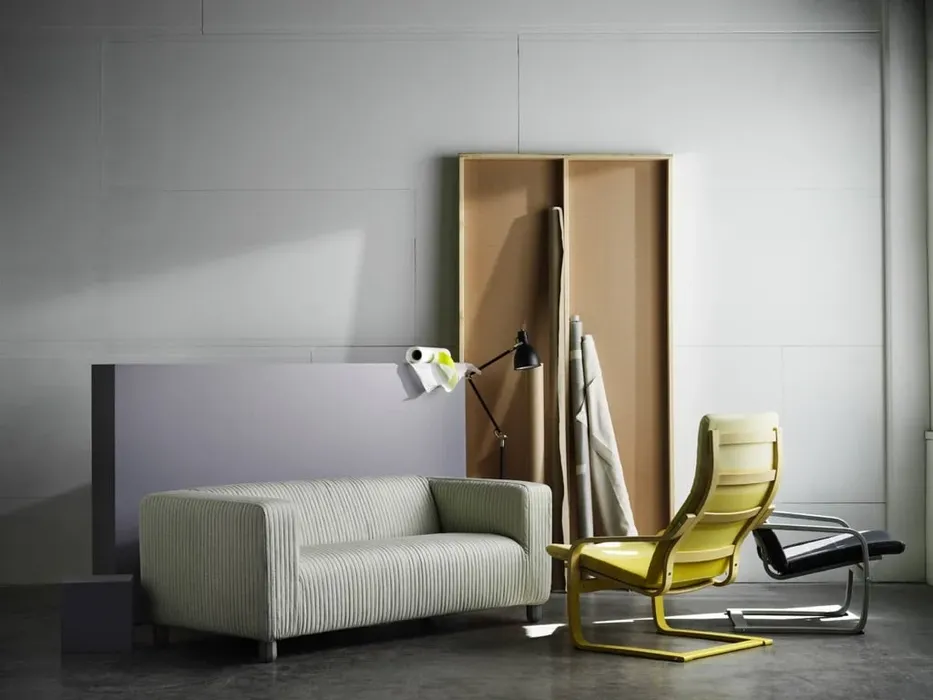
Charles R. Goulding and Preeti Sulibhavi unpack IKEA’s unique approach to affordability, exploring how 3D printing and price cuts fuel its customer-centered mission.
IKEA, a leading global furniture brand, recently recorded a notable shift in its financial trajectory. Despite an increase in unit product sales, IKEA’s annual revenue took a dip for the first time since 2020. For the fiscal year leading up to August 31, 2024, IKEA reported a 5.3 percent decline in revenue, bringing in €4.5 billion. However, the underlying story is not about a decline in business, rather it reflects IKEA’s intentional pivot toward affordability, aligning more closely with its long-held mission of providing quality, functional home furnishings at accessible prices. In parallel, IKEA has also been pushing the envelope on innovation by experimenting with 3D printing technology to enhance both product quality and efficiency.
A Snapshot of IKEA’s Financial Performance
IKEA’s revenue was notably lower than previous periods, this past summer. The 5.3 percent revenue fall, however, occurred as the brand managed to sell a higher volume of products, primarily due to a 10 percent average price cut across a range of offerings. Lower prices allowed more consumers to afford IKEA’s products, directly contributing to increased unit sales. As part of this strategy, IKEA focused on the idea of “affordability” as a mantra to navigate economic uncertainty, target cost-sensitive buyers, and preserve its core brand mission.
Financial Strategy: Prioritizing Affordability Over Profit Margins
With its commitment to affordability, IKEA reduced prices on several product lines, balancing between sales volume and profitability. While these price reductions affected revenue, they also made the products more accessible to households facing tighter budgets, driving an overall increase in unit sales. Given that IKEA is not publicly listed and does not face quarterly pressures from shareholders, the company has the flexibility to make strategic financial decisions that prioritize customer loyalty and mission alignment over short-term profits.
For IKEA, affordability is not merely a tactic to attract consumers during economically challenging times. Instead, it is a return to the company’s foundational mission. Affordability appeals directly to their broad customer base, many of whom are young people, families, and students seeking functional yet stylish solutions without a hefty price tag.
Innovation in 3D Printing: Enhancing IKEA’s Product Offerings
In addition to its pricing strategy, IKEA has been exploring 3D printing to expand its innovation capacity. By integrating 3D printing, IKEA aims to produce customizable components, reduce waste, and enhance product design versatility. This approach not only aligns with its affordability goal by reducing production costs but also reflects IKEA’s commitment to sustainability through minimized material waste.
Below are four recent examples of IKEA products that incorporate 3D printed components:

1. Omedelbar Collection: 3D Printed Chair Components
The Omedelbar Collection, a line aimed at bringing contemporary, expressive designs into everyday homes, includes a 3D printed chair. IKEA utilized 3D printing for specific chair components to create a complex, intricate design that would have been more difficult and costly using traditional manufacturing methods. The 3D printed chair parts are made from lightweight, durable plastic, allowing for easy assembly and efficient packaging. By employing 3D printing, IKEA could reduce production costs and enhance the aesthetic appeal of the chair with a more intricate, unique pattern on the seat and backrest.
2. Odger Stool: Recycled 3D Printed Seat Surface
Another example of IKEA’s recent foray into 3D printing is the Odger Stool. In line with IKEA’s commitment to sustainability, the stool’s seat surface is created using 3D printed recycled materials. By combining post-consumer plastic and wood-based fibers, IKEA created a durable and eco-friendly stool that emphasizes both affordability and sustainability. This innovative use of 3D printing aligns with IKEA’s ambition to be circular and climate-positive by 2030, reflecting the company’s commitment to reducing its environmental footprint.
3. Svampa: Customizable Storage Solutions
The Svampa line of storage solutions is another example where IKEA has utilized 3D printing to offer consumers an elevated degree of customization. This line includes 3D printed storage boxes and compartments, available in various colors and sizes. By integrating 3D printing into Svampa’s design, IKEA provides customers with customizable, adaptable storage options at a lower cost than custom-built furniture. Furthermore, the use of 3D printing allows IKEA to produce these items in smaller batches, minimizing inventory costs and enabling just-in-time manufacturing, a technique that reduces waste by aligning production closely with demand.
4. Lyskraft: 3D Printed Lighting Fixtures
IKEA’s recent lighting collection, Lyskraft, includes lampshades and lighting fixtures and components produced with 3D printing. By using 3D printing, IKEA created unique, intricate patterns in the lampshades that are difficult to achieve with traditional manufacturing methods. The shades are crafted from lightweight, eco-friendly materials, reflecting IKEA’s emphasis on sustainability and resource efficiency. This approach not only minimizes material waste but also reduces shipping costs, as 3D printed components are lighter and require less space for storage and transportation. IKEA’s Lyskraft series thus marries eco-conscious design with innovative manufacturing processes to bring affordable and elegant lighting solutions to consumers.

Balancing Profitability and Mission: The IKEA Perspective
IKEA’s recent decisions highlight a calculated approach that prioritizes brand values over maximizing short-term profitability. By reducing prices across key product lines, IKEA has been able to increase accessibility and attract more customers, even if that meant sacrificing a portion of its revenue. IKEA’s pricing model underscores a core understanding of its primary customer base: those seeking functional, well-designed furniture at a reasonable price.
Unlike publicly listed companies that must adhere to strict quarterly reporting and shareholder expectations, IKEA has more flexibility in implementing long-term strategies. This freedom has allowed IKEA to respond to the economic climate by reducing prices and prioritizing affordability without the immediate pressure to drive up shareholder profits. For IKEA, this ability to pivot aligns with its mission of accessibility, particularly as global inflation continues to impact household purchasing power.
IKEA’s Affordability Mantra: A Model for Other Brands?
In an era where brands often focus on maximizing profits and responding to investor pressures, IKEA’s focus on affordability stands as an example of customer-centered business practices. Other brands may find themselves encouraged by IKEA’s strategy, which emphasizes consumer needs and a return to brand roots. By leveraging price cuts to increase product accessibility, IKEA provides a potential model for companies considering ways to balance profitability with customer loyalty.
Additionally, IKEA’s integration of 3D printing reflects its commitment to innovation and sustainability—qualities that may serve as competitive differentiators in an increasingly crowded market. While the technology has traditionally been considered costly, IKEA has found ways to integrate it in a cost-effective manner that enhances product design and customization options.
The Research & Development Tax Credit
The now permanent Research and Development (R&D) Tax Credit is available for companies developing new or improved products, processes and/or software.
3D printing can help boost a company’s R&D Tax Credits. Wages for technical employees creating, testing and revising 3D printed prototypes can be included as a percentage of eligible time spent for the R&D Tax Credit. Similarly, when used as a method of improving a process, time spent integrating 3D printing hardware and software counts as an eligible activity. Lastly, when used for modeling and preproduction, the costs of filaments consumed during the development process may also be recovered.
Whether it is used for creating and testing prototypes or for final production, 3D printing is a great indicator that R&D Credit-eligible activities are taking place. Companies implementing this technology at any point should consider taking advantage of R&D Tax Credits.
Conclusion
IKEA’s decision to cut prices on average by 10 percent and embrace affordability illustrates its commitment to making home furnishings accessible to a wide audience. Although this decision led to a slight decline in revenue, the company successfully increased product sales by creating more value for consumers amid economic uncertainty. Its investments in 3D printing technology further showcase IKEA’s commitment to innovation, sustainability, and design flexibility.
This combination of affordability and technology has not only helped IKEA stay relevant but has also solidified its reputation as a brand dedicated to serving its customers’ needs. As other companies weigh the benefits of similar strategies, IKEA’s approach provides a reminder that prioritizing customers and maintaining brand values can indeed be a viable path, even in challenging times. With its mission-centered focus and pioneering spirit, IKEA continues to lead by example, balancing affordability with innovation and setting a high bar for customer-centered business practices.
